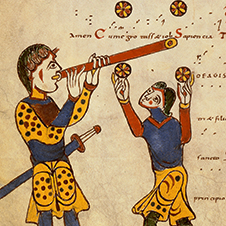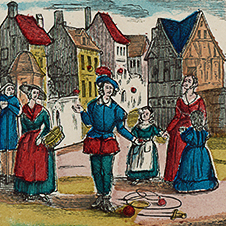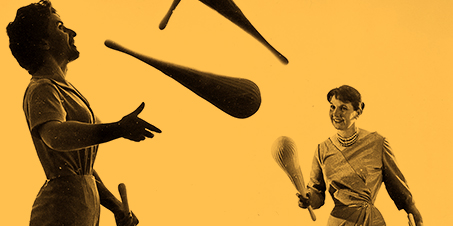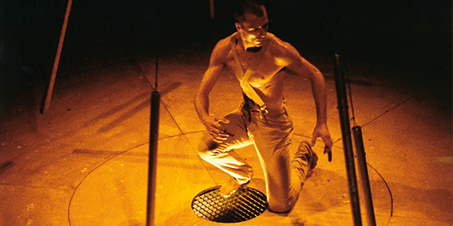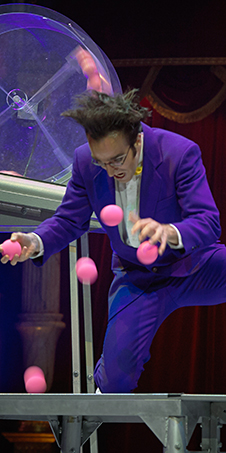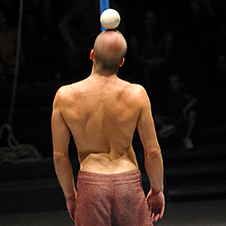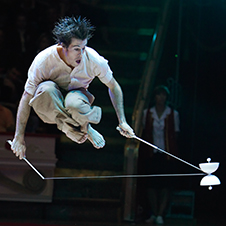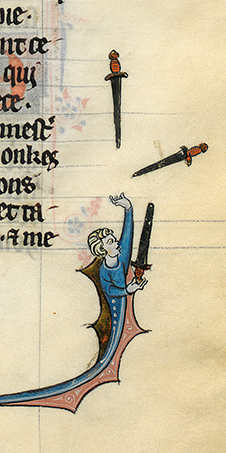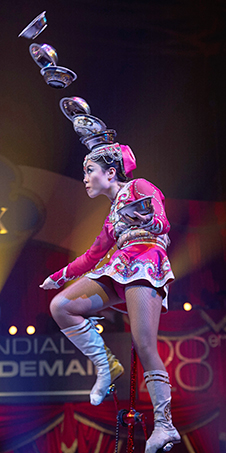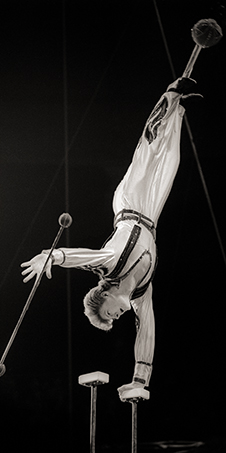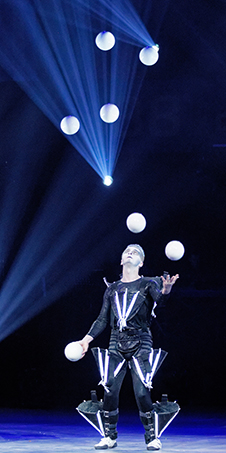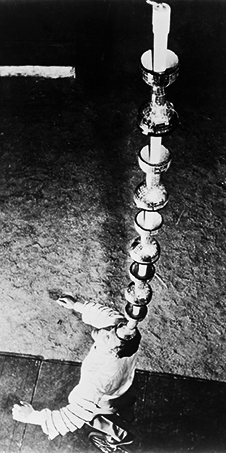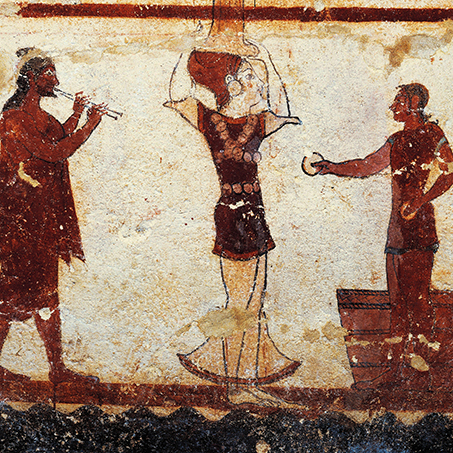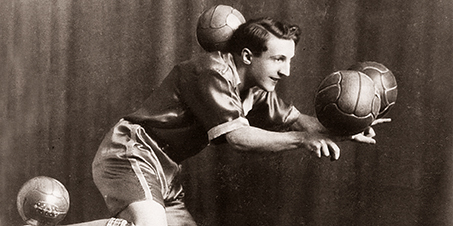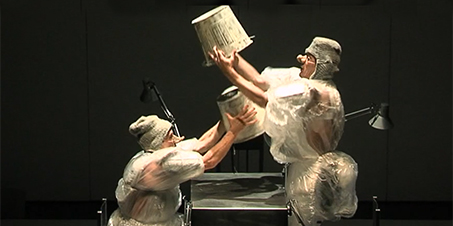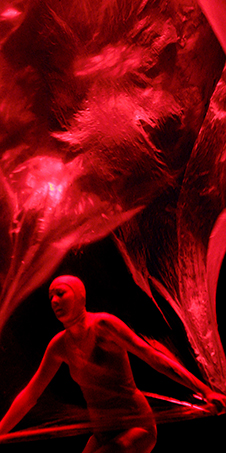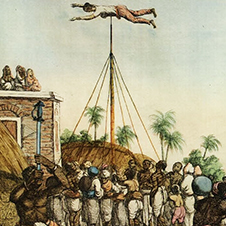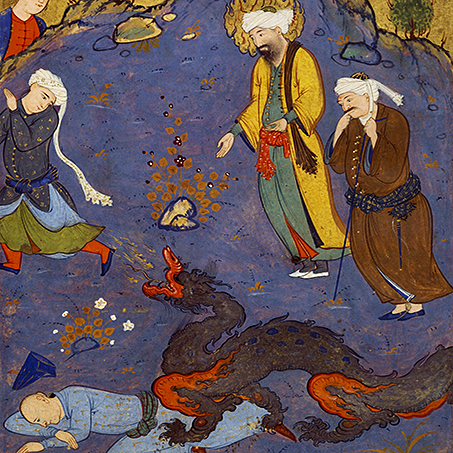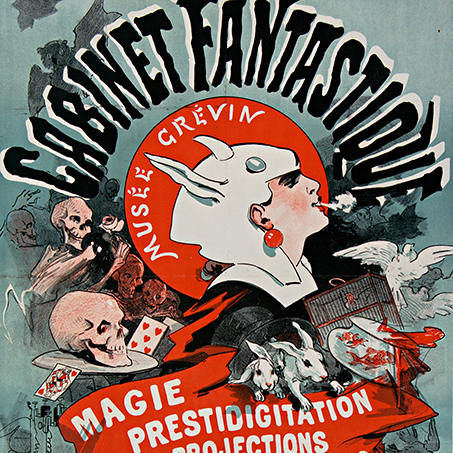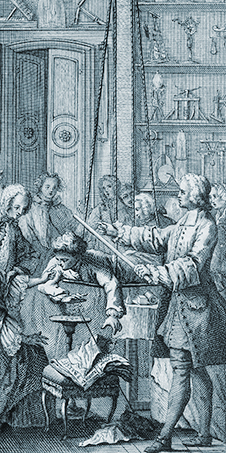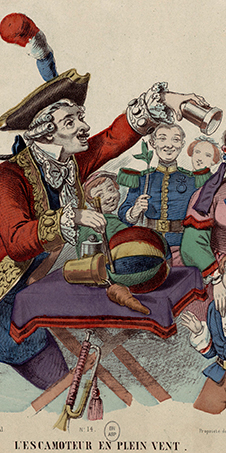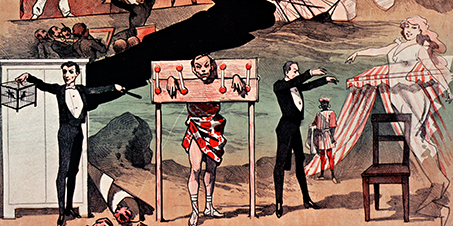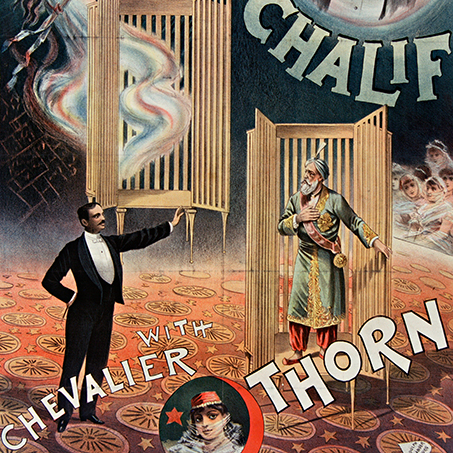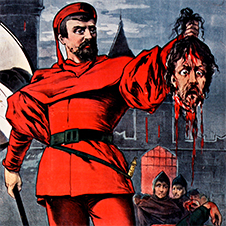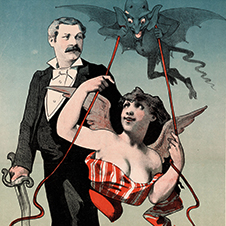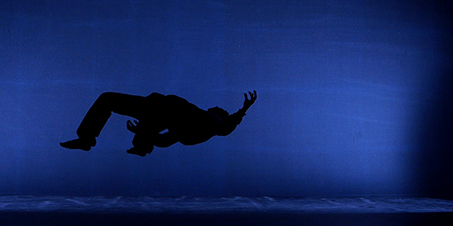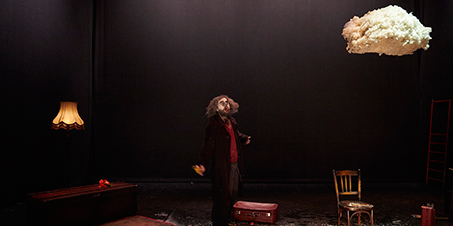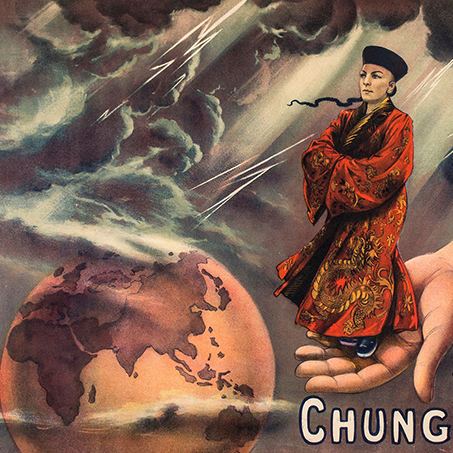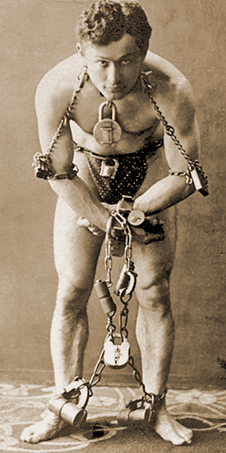J U G G L I N G
Juggling
Throwing and catching objects skilfully by giving them a periodic motion... everyone has in mind the image of three white balls intersecting their trajectories and drawing a figure in the shape of a lying eight, the symbol of infinity, a cascade.
The number of objects can vary, the number of jugglers can also vary, the thrown objects can be of the same nature – so-called symmetrical juggling – or not. Virtually infinite on computer and only limited in the physical world by the muscular power of the juggler, it can be mathematically calculated
Shapes
Juggling can be done in an upward direction. This is aerial juggling. Any throwable and catchable object can be used: balls, clubs, rings, scarves, dolls, flowers or carpets. The downward movement is called bounce juggling, with rubber or silicone balls. Sometimes objects are suspended, and this is called pendulum juggling. Art no longer consists in avoiding their fall but in preventing them from hitting each other.
Finally, horizontal juggling requires that the movement of objects rolling or spinning on the ground must not be allowed to "die".
Manipulation of objects
The manipulation of objects consists in skilfully handling one or more objects. But the balance of an object at a point on the body or its path along the body, defines contact juggling and knife or boomerang throwing, or ballistic skill. In the "diabolical" manipulation, with devil's sticks, diabolos or cigar boxes, one remains in hand, the other one does the acrobatic stunts. Skill games with yo-yo, lasso or bilboquet do not involve any release. Finally, antipodism, is the art of lying jugglers who twirl objects with their feet.
Juggling
For a long time, juggling has been defined by its opposite or its unpleasant and nevertheless inexorable side: the drop. This does not only express a physical law but also has symbolic connotations, which are usually negative.
Any juggler, even experienced jugglers, can drop their objects "by accident". Taboo for centuries, the attitude towards the drop, shame, indifference or rage, is now widely accepted since the 1980s as an essential part of juggling and as a potential source of artistic approach, a pretext for major innovations.
Reference points
Perennial, the non-periodic manipulation of objects is rooted in immemorial gestures such as the virtuoso throws of cast-net fishermen or the "juggling" of pizzaiolos or football players. But on the other hand, juggling, the periodic manipulation of objects, has a very long history: women were juggling in Egypt 4,000 years ago. Juggling appears in all eras, with various functions, whether they are recreational, military or religious. It takes on a new meaning with the appearance of the modern circus in 1768, the successive revolutions of amateur juggling, and later the New Circus.
Figures
Juggling, now emancipated, forces us to look at it from a different angle. From 1850 onwards, its history was written as a hagiographical succession of talents. Elegant, flawlessly virtuosic, Enrico Rastelli is the definitive proponent of the discipline's evolution. Bobby May's minimalism, Francis Brunn's choreographic dimension, Serguei Ignatov's and Anthony Gatto's pure technicality, Michael Moschen and Jérôme Thomas' poetic creativity or the conceptualisation of movement at the heart of Phia Ménard's work are all possible references for the history of the movement.
M A G I C
The first magicians
Magic, from the Greek mageia, a variation of the Persian magus, is a singular discipline that blurs the boundaries between spectacle and mysticism.
Based on magical rites that defy natural laws, it has developed since prehistoric times, already illustrated on the walls of Egyptian tombs. Having been witnessed in China before our era, it was weakened in the West by the Inquisition.
This art of dexterity inherited from the Alciphron pebble player or Indian jugglers takes its modern form in the 18th century salons.
Magic and physics
The appearance of physics cabinets in the 18th century, between a fairground hut and a shop, flattered the scientific curiosity of the time. Experiments produced with fake instruments suggest the revelation of new physical principles and essential mysteries in a theatrical form that ignites the imagination.
Comus, the main official "physicist", whose secrets were unveiled by Guyot in a book that circulated throughout Europe, created vocations for an art of "recreation" that would soon be ennobled at the salons.
Magic stages
The first magical place is the street occupied by the skilful conjurer. Soon, in the salons, the high society gathers to discover tricks and other recreations among themselves, based in particular on optical effects.
The prestidigitation theatres supplant them with a deployment of great illusions whose mysterious dimension increases with the distance between the magician and his audience.
At the cabaret or in a round circus ring, the attraction requires an appropriate production setting, to preserve the secrets and enhance the effects.
Great illusions
In the 19th century, mirrors and the use of shadows served a romantic theatre populated by ghosts. From this strange universe comes escapology, an art of escape in which the magician is the restrained hero, levitation, an unprecedented experience in which bodies seem to float above the floor or the Indian Trunk, a generic attraction in which designated victims are locked in boxes pierced with sharp blades. A raw repertoire of macabre fantasies developed from the 1920s onwards, supported in particular by the advent of horror films.
Magie nouvelle (New magic)
A contemporary artistic movement, Magie nouvelle (New magic) brings together some sixty companies from around the world. Initiated in France in 2002 by Clément Debailleul, Valentine Losseau and Raphaël Navarro, it was quickly enriched by a repertoire of varied authors who placed the imbalance of the senses and the diversion of reality at the centre of artistic challenges. Magic then asserts itself as an autonomous language at the crossroads of the arts, open to multiple collaborations with the circus, dance, theatre, puppetry and the visual or digital arts.
Great figures
From the wizard Djédi in the 12th century to the contemporaries David Copperfield, airplane conjurer, or Siegfried and Roy who materialise wild animals over and over again, it seems that the mythification of personality is the true secret of the great magicians more than the mechanics of mystery. In the Age of Enlightenment, the "Knight" Pinetti reactivated the dark side of magic. In the 19th century, Bosco dramatised the original set of cups and Robert-Houdin offered a creative and pure prestidigitation. In the 20th century, the minimalism of the English Cardini succeeded the orientalising splendours of the American Chung Ling Soo, and in this sophisticated universe the memory of Houdini, champion of brute escape, still lives on.




